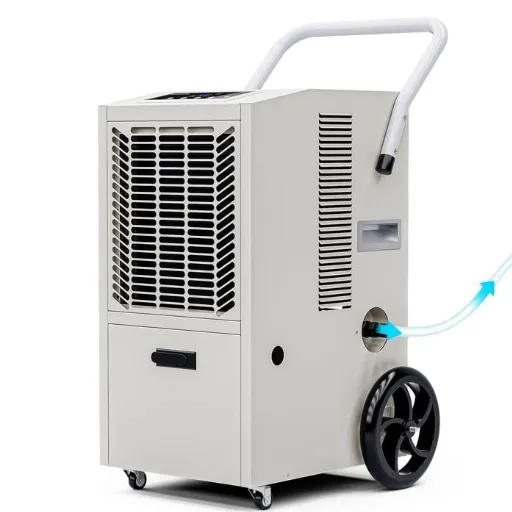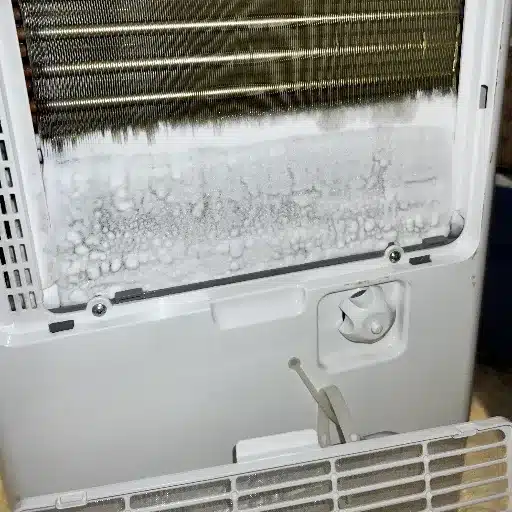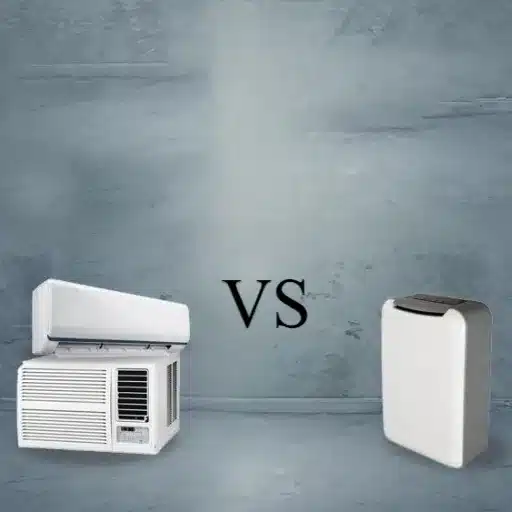Moisture problems in your crawl space can lead to a host of issues, from structural damage to poor indoor air quality and even mold growth. While a crawl space dehumidifier is often hailed as the ultimate solution, many homeowners are left wondering why this equipment comes with such a high price tag. Is it justifiable, or are there hidden factors driving up costs? In this article, we’ll unpack the reasons behind the expense of crawl space dehumidifiers, analyzing the advanced technology, installation requirements, and long-term benefits they bring to your home. By the end, you’ll have a clear understanding of whether investing in a crawl space dehumidifier is both a necessary and cost-effective decision for protecting your property and health.
What Factors Contribute to the High Cost of a Dehumidifier in a Crawl Space?
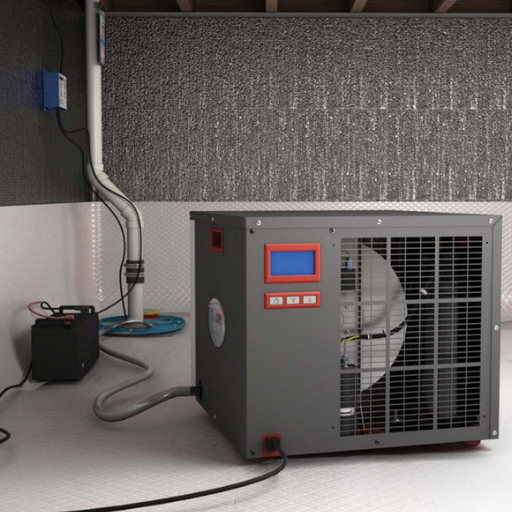
A few key factors contribute to the high cost of a crawl space dehumidifier:
- Specialized Design – Crawl space dehumidifiers are specifically engineered to function in tight, damp, and low-clearance spaces. Their compact size and durable build increase manufacturing costs.
- High-Performance Features – These units often include features like enhanced airflow, high-capacity water extraction, and energy efficiency, making them more effective than standard dehumidifiers.
- Durability and Longevity – Built to withstand harsh environments, crawl space dehumidifiers use high-quality materials that ensure long-lasting performance, which raises their price.
- Professional Installation – Many models require professional installation to ensure proper placement and operation, which adds to the overall expense.
- Energy Efficiency Standards – While designed to reduce energy consumption over time, meeting stringent efficiency standards can increase upfront manufacturing costs.
Understanding the Technology Behind a Crawl Space Dehumidifier
Crawl space dehumidifiers are designed with advanced technology to effectively manage and maintain optimal humidity levels in confined spaces. At their core, these devices rely on a combination of refrigeration and air circulation processes. Warm, moist air enters the dehumidifier through an intake system. Once inside, the air passes over cold evaporator coils, causing the moisture in the air to condense into water droplets. This water is then collected in a built-in reservoir or directed out through a drainage system, ensuring continuous operation. The dry, filtered air is reheated and released back into the crawl space, promoting a balanced and healthier environment.
Modern dehumidifiers often integrate precision sensors that automatically monitor and adjust humidity levels for efficiency. These systems can maintain humidity in a range of 30% to 50%, an ideal level for preventing mold and mildew growth, as well as protecting structural integrity. Highly energy-efficient compressors and environmentally friendly refrigerants (such as R410A) are now widely adopted, minimizing both energy consumption and environmental impact.
Some advanced models even feature smart connectivity, allowing homeowners to monitor and control the dehumidifier remotely via mobile apps. This not only enhances user convenience but also provides real-time performance data and maintenance reminders. Furthermore, their durable, compact design makes them capable of handling the challenging conditions of crawl spaces, including low temperatures and limited airflow, while maintaining consistent performance.
Data suggest that a high-quality crawl space dehumidifier can remove up to 70 to 90 pints of water per day, depending on the unit and environmental conditions, making it a highly effective tool in combating excessive moisture in vulnerable areas. By leveraging these technological innovations, modern dehumidifiers contribute significantly to creating healthier and more comfortable indoor environments.
Impact of Humidity Level and Moisture Control Needs
The balance of indoor humidity levels plays a crucial role in maintaining structural integrity, protecting possessions, and ensuring overall health. According to current information, optimal indoor humidity levels range between 30% and 50%, as levels exceeding this threshold can encourage the growth of mold, dust mites, and other allergens. Prolonged exposure to high humidity not only deteriorates materials like wood and drywall but also increases the likelihood of respiratory issues caused by poor air quality.
Modern dehumidifiers are equipped to address these concerns by efficiently maintaining optimal humidity levels in areas such as crawl spaces, basements, and attics. Data highlights that advanced systems with energy-efficient technologies can regulate environments covering over 2,500 square feet, while often consuming less power, making them a cost-effective solution for homeowners. Furthermore, studies indicate that proactive moisture control can reduce the risk of pest infestation by eliminating the damp conditions required for their survival.
These preventative measures directly impact property value, as homes with effective moisture control systems are less likely to experience damage over time. By investing in high-performing dehumidifiers, individuals can create a healthier, safer, and more sustainable living environment tailored to their specific needs.
Role of Energy Efficiency and HVAC Integration
Energy efficiency plays a pivotal role in modern HVAC systems, enabling homeowners to reduce energy consumption and lower utility bills while maintaining optimal indoor comfort. When integrated with advanced HVAC technologies, energy efficiency measures can amplify both environmental and economic benefits. According to recent data, heating and cooling account for nearly 40% of the average home’s annual energy consumption, emphasizing the importance of efficient systems. High-efficiency HVAC units, such as those with ENERGY STAR® certification, typically use 20-30% less energy than standard models, contributing to significant long-term savings.
Integrated HVAC systems equipped with smart thermostats and zoning capabilities further enhance efficiency. These technologies provide precise temperature control, allowing users to heat or cool specific areas of a property based on occupancy patterns. For example, zoning systems can reduce energy waste by up to 30% by ensuring that energy is only used where and when it is needed. Additionally, modern HVAC designs now incorporate variable speed compressors, which optimize energy use by adjusting system output according to real-time indoor conditions.
Furthermore, integrating renewable energy sources, such as solar panels, into HVAC systems is becoming increasingly common. This not only offsets traditional energy use but can also qualify homeowners for tax credits and rebates, increasing the return on investment. By combining energy-efficient practices with cutting-edge HVAC integration, property owners can enjoy improved air quality, more consistent comfort, and reduced environmental impact—fostering a harmonious balance between performance and sustainability.
How Does Crawl Space Encapsulation Influence Dehumidifier Costs?
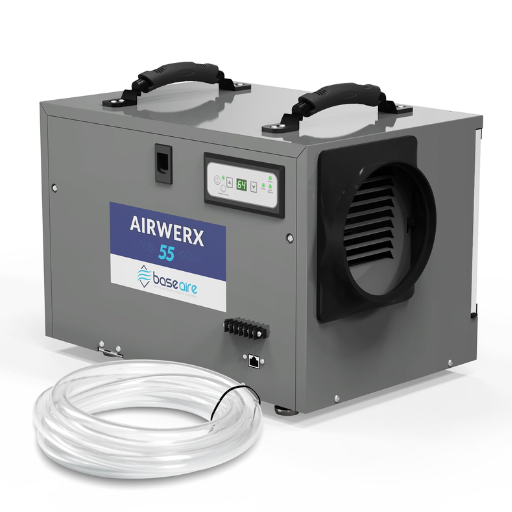
Crawl space encapsulation significantly reduces dehumidifier costs by minimizing the amount of moisture entering the area. By sealing off the crawl space with a moisture barrier, less humid air infiltrates, meaning the dehumidifier does not need to work as hard or as frequently to maintain optimal humidity levels. This translates to lower energy consumption and reduced wear and tear on the dehumidifier, ultimately extending its lifespan and saving on replacement or maintenance expenses.
Benefits of Crawl Space Encapsulation
- Improved Indoor Air Quality
Sealing off the crawl space prevents the infiltration of moisture, mold, and allergens into your home. Studies show that up to 50% of the air in a home can originate from the crawl space, meaning encapsulation directly improves the air you breathe and reduces respiratory risks.
- Enhanced Energy Efficiency
Crawl space encapsulation reduces the transfer of heat and cold through the floor, helping maintain consistent indoor temperatures. According to the U.S. Department of Energy, homeowners can save up to 20% on energy bills by eliminating air and moisture leaks through proper sealing and insulation.
- Prevention of Mold and Mildew Growth
High moisture levels create the perfect environment for mold and mildew. Encapsulation keeps humidity levels below 50%, a critical threshold for preventing microbial growth, protecting your home and health over time.
- Structural Protection
By controlling moisture levels, encapsulation safeguards wooden beams, joists, and other structural components from rotting or warping. This extends the lifespan of your home’s foundation and reduces costly repairs in the future.
- Pest and Rodent Control
A sealed and encapsulated crawl space creates a defensive barrier against pests and rodents that often invade damp, unprotected areas. This eliminates potential damage to insulation, wiring, and other crawl space components.
- Enhanced Property Value
A home with an encapsulated crawl space is often seen as better maintained and more energy-efficient, making it attractive to potential buyers. Real estate experts suggest that crawl space encapsulation can increase resale value by 5-10%.
- Reduction in Musty Odors
Moisture and mold in crawl spaces often contribute to unpleasant odors in the home. Encapsulation eliminates the dampness that causes these smells, leading to a fresher indoor environment.
- Long-Term Savings
While the upfront cost of encapsulation may seem significant, the long-term savings from reduced energy consumption, lower maintenance costs, and fewer repairs make it a worthwhile investment. For example, homeowners report average yearly savings of $300-$500 on energy costs alone.
Cost Breakdown: Encapsulate vs. Dehumidification
When considering crawl space improvements, understanding the financial implications of encapsulation versus dehumidification is essential. Both methods aim to manage moisture and create a healthier home environment, but their costs and benefits differ substantially.
Encapsulation Costs
Encapsulation typically involves sealing the entire crawl space with a high-quality vapor barrier, adding insulation, and occasionally installing a sump pump or drainage system. On average, this can cost between $5,000 and $15,000, depending on the size of the crawl space, materials used, and any additional features required. While the upfront investment is significant, encapsulation provides a long-term solution, reducing humidity levels, improving energy efficiency, and extending the life of HVAC systems. Many homeowners also report increased property values as a result of this upgrade.
Dehumidification Costs
For homeowners seeking a less expensive option, installing a crawl space dehumidifier is a more budget-friendly choice. Typical dehumidifier installation costs range from $1,500 to $3,000, including the unit and professional installation. Dehumidifiers require regular maintenance, such as filter changes and occasional servicing, and run on electricity, leading to additional operational costs of $100-$250 per year. While effective at managing humidity, dehumidifiers do not address structural issues or provide insulation, making them a less comprehensive solution compared to encapsulation.
Long-Term Savings
Over time, encapsulation tends to deliver greater savings. Energy bills can decrease by 15-20% annually, resulting in savings of approximately $300 to $500 per year due to improved insulation and HVAC efficiency. Conversely, dehumidification may yield only modest reductions in energy costs, as the root causes of moisture infiltration remain unresolved. Additionally, encapsulation minimizes the likelihood of costly repairs from rot, mold, or pest infestations, further enhancing its value over the long term.
Ultimately, the decision between encapsulation and dehumidification depends on the homeowner’s budget, the specific conditions of the crawl space, and long-term goals for the property. For a comprehensive, lasting solution, encapsulation offers superior performance and financial returns, whereas dehumidification is a viable short-term option for managing moisture.
Choosing the Best Crawl Space Dehumidifier for Your Needs
Selecting the ideal crawl space dehumidifier requires careful consideration of key factors such as coverage area, capacity, energy efficiency, and features tailored to your environment. The size of your crawl space plays a crucial role in determining the appropriate dehumidifier model. For example, a small crawl space of up to 1,200 square feet may benefit from a compact unit with a capacity of 50 pints per day, whereas larger areas exceeding 2,500 square feet typically need a higher-capacity model, capable of extracting 70-90 pints daily.
Energy efficiency is another critical factor to consider. Units that are ENERGY STAR® certified can help reduce power consumption while maintaining optimal performance, ultimately lowering energy costs over time. When exploring options, it’s also important to evaluate additional features like built-in pumps for hassle-free water removal, programmable humidistats for precise humidity management, and auto-restart functions in case of power outages.
Additionally, the durability of the unit and its ability to operate effectively in low-temperature environments are especially significant for crawl spaces, which can experience cooler conditions. Models such as the Aprilaire E100 and Santa Fe Advance90, for instance, offer robust build quality and efficient moisture control even in challenging conditions.
For homeowners looking for smart solutions, some models now come with WiFi connectivity, allowing you to monitor and control humidity levels remotely via smartphone apps. This level of convenience ensures that moisture management is streamlined, even when you aren’t on the property.
Ultimately, the best dehumidifier for your crawl space balances performance, reliability, and features while tailoring to your specific requirements. By assessing coverage needs and emphasizing efficiency, you can make an informed investment that protects your home from excess moisture and its associated risks.
Is a Basement Dehumidifier Different from a Crawl Space Dehumidifier?
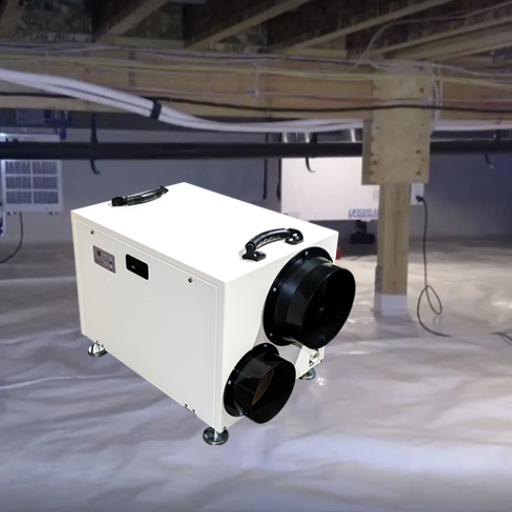
Indeed, basement and crawl space dehumidifiers may be designed for different spaces, but their main function is still the same: moisture removal. While a crawl space dehumidifier is specifically designed to work efficiently within confined spaces, a basement dehumidifier is built for larger, open areas and may have higher capacity. Both types serve a purpose. The key is finding the correct one for your needs.
Key Differences in Design and Functionality
When comparing whole-house and crawl space dehumidifiers, several distinct design and functional aspects come into play. Whole-house dehumidifiers are generally larger, with the capability to extract significant amounts of moisture—some models can remove up to 70-90 pints of water per day, depending on the humidity levels and size of the house. These systems integrate with HVAC systems to regulate humidity throughout the entire home, promoting uniform comfort and reducing strain on cooling systems.
Crawl space dehumidifiers, in contrast, are highly specialized units designed to work efficiently in confined areas. They are compact yet powerful, often removing 50-70 pints of water per day, despite their small form factor. Many models incorporate rugged exteriors and sealed circuits to withstand challenging environments that may include high levels of moisture, dirt, or debris.
Another critical design difference lies in energy consumption. Whole-house dehumidifiers may consume more energy due to their larger coverage area, while modern crawl space dehumidifiers are often equipped with energy-saving features—like smart sensors or timers—tailored to smaller spaces.
Lastly, maintenance requirements vary between the two. Whole-house units may involve periodic filter replacements and professional servicing due to their integration with HVAC systems. Crawl space dehumidifiers typically require less complex maintenance routines, such as cleaning and occasional filter changes, but their location in more challenging environments necessitates careful placement and inspection to ensure efficiency over time.
When to Use a Basement vs. Crawl Space Dehumidifier
Choosing between a basement and crawl space dehumidifier depends on your specific environmental factors, space requirements, and the overall goals for humidity control. Basements, often larger and more accessible, are prone to moisture-related issues due to below-ground positioning and limited ventilation. For these areas, a basement dehumidifier is designed to handle higher square footage and greater volumes of air, with many models offering a capacity to remove up to 70 pints of moisture per day. This makes them ideal for maintaining a comfortable and mold-free environment in spaces frequently used for storage or even as living areas.
On the other hand, crawl spaces are typically smaller, more confined, and less frequently accessed. The limited airflow and increased likelihood of water intrusion in these spaces require dehumidifiers that are compact, highly efficient, and capable of operating in tough conditions, such as low temperatures. Crawl space dehumidifiers are often built with advanced features, like high-efficiency compressors and robust drain systems, allowing them to extract between 20 to 50 pints of moisture daily, depending on the model. These dehumidifiers are particularly effective at preventing wood rot, structural damage, and pest infestations caused by excess humidity.
When making a choice, it is vital to monitor the relative humidity (RH) levels in both areas. Basements should ideally maintain an RH level between 30% and 50%, whereas crawl spaces often require tighter control to avoid moisture build-up and protect foundational integrity. Additionally, consider energy efficiency ratings, ease of installation, and the specific environmental challenges each space faces. By aligning these factors with your dehumidification needs, you can create a healthier, more comfortable living environment throughout your home.
What Are the Potential Consequences of Not Using a Dehumidifier?
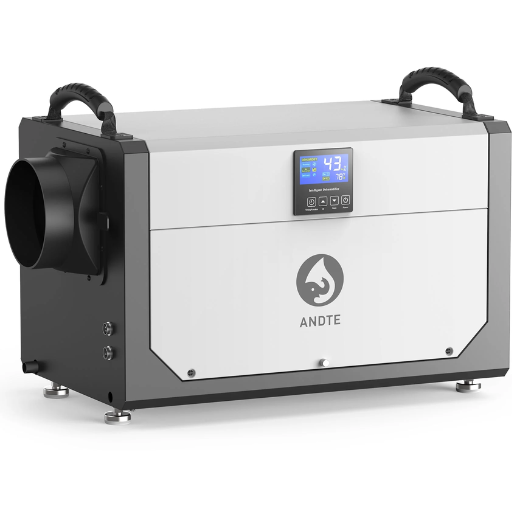
Failing to use a dehumidifier in spaces with high humidity levels can lead to several significant issues. Excess moisture in the air can promote the growth of mold and mildew, which not only damages surfaces and structural elements but also poses health risks, especially for individuals with respiratory conditions or allergies. High humidity can also attract pests, such as dust mites and termites, which thrive in damp environments. Additionally, prolonged exposure to moisture can weaken wooden structures, corrode metal fixtures, and contribute to unpleasant odors, ultimately impacting the comfort and safety of your home.
Risk of Mold Growth and Mildew
Mold growth and mildew thrive in environments with high humidity levels, stagnant air, and organic materials for sustenance. According to environmental studies, humidity levels above 60% create ideal conditions for mold proliferation. Bathrooms, basements, and poorly ventilated areas are particularly vulnerable due to their higher moisture content. Additionally, leaks in roofs, walls, or plumbing can introduce water into hidden spaces, fostering mold colonies.
Research highlights that mold spores are ubiquitous in the air and only require 24 to 48 hours of moisture exposure to grow. For instance, the U.S. Environmental Protection Agency (EPA) notes that indoor mold can begin to form on damp surfaces such as wood, drywall, or carpet fibers within this short timeframe. Once established, it can spread rapidly, affecting large sections of a home if left untreated.
Furthermore, mildew often appears as a precursor to more extensive mold issues, presenting as gray or white powdery patches on surfaces. This lighter form of fungal growth typically indicates that conditions are primed for expanded mold formation. Regular maintenance, improved ventilation, and swift action on leaks are pivotal in mitigating these risks and preserving a healthy indoor environment.
Impact on Indoor Air Quality and Air Quality
Mold and mildew can profoundly degrade both indoor air quality and the overall surrounding environment. Indoor spaces infested with mold release microscopic spores into the air, which can be inhaled by occupants, leading to respiratory issues, allergies, and in severe cases, chronic illnesses such as asthma. According to studies, prolonged exposure to damp and moldy environments can increase the risk of developing respiratory conditions by up to 50%.
Beyond health effects, mold also contributes to the release of volatile organic compounds (VOCs), which can combine with indoor pollutants to create an even more hazardous air environment. The presence of airborne mold spores has been found to elevate the particulate matter (PM) levels in enclosed spaces, a critical factor in assessing air quality. High PM levels have been directly linked to cardiovascular and pulmonary health risks, highlighting the seriousness of mold presence.
Effective prevention measures, including consistent monitoring of humidity levels (ideally maintaining them between 30-50%) and regular cleaning protocols, are essential for reducing airborne contaminants associated with mold. Improving ventilation systems also minimizes the extent of mold spores circulating indoors, fostering healthier living conditions. With poor indoor air quality being linked to billions of dollars in healthcare costs annually, it is clear that addressing the issue of mold and maintaining optimal air quality should be a priority.
Preventing Structural Damage and Wood Rot
Moisture is one of the primary causes of structural damage and wood rot, often stemming from undetected leaks or prolonged exposure to damp conditions. When moisture infiltrates wooden structures, it creates the perfect environment for fungi, particularly wood-decay fungi, to thrive. Over time, this compromises the integrity of beams, floorboards, and load-bearing supports, leading to costly repairs or even hazardous conditions.
To combat wood rot, routine inspections are fundamental. Studies show that over 85% of cases involving structural damage could have been mitigated had moisture issues been identified earlier. Homeowners and property managers should focus on checking for discoloration, warping, or a musty odor in wooden areas, which are telltale signs of rot. Moisture meters are excellent tools for identifying early issues before visible damage occurs.
Implementing preventive measures is equally essential. Applying borate wood treatments is effective in not only protecting new wood but also halting decay in damaged areas. Properly sealing outdoor wood with waterproof paint or stain adds an extra layer of defense against the elements. Additionally, maintaining adequate drainage around structures and ensuring that gutters and downspouts are free of obstructions reduces prolonged exposure to water.
On a broader scale, climate statistics indicate that regions with high humidity levels, particularly those exceeding 70%, face the most significant risks of wood rot. Consequently, managing indoor humidity levels within the ideal range of 30-50% can help preserve structural components. Furthermore, timely repairs of roofing and plumbing leaks offer long-term savings, as addressing rot at its root prevents extensive structural degradation. By combining vigilant maintenance and proactive measures, both structural stability and the longevity of wood can be confidently safeguarded.
How Can Homeowners Reduce Installation Costs?
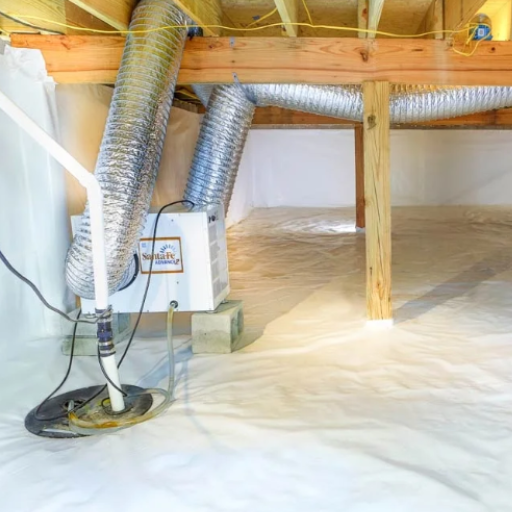
Homeowners can reduce installation costs by taking a few strategic steps. First, gather multiple quotes from reputable contractors to compare prices and ensure competitive rates. Second, consider purchasing materials in bulk or during sales to lower expenses. Third, explore energy-efficient solutions or government rebates that may provide cost savings or subsidies. Finally, plan installations during off-peak seasons when labor costs are often lower. These practical measures can help homeowners achieve quality results while staying within budget.
DIY vs. Professional Dehumidifier Installation
Choosing between a DIY installation and hiring a professional for your dehumidifier installation depends on several factors, including cost, complexity, and your level of expertise. DIY installation may seem like a cost-effective solution, as it typically eliminates labor expenses, which can range from $200 to $500 depending on your location. Most portable dehumidifiers are relatively straightforward to set up, requiring minimal tools and basic technical knowledge. Following the manufacturer’s guidelines often ensures a successful installation at no additional cost.
However, for whole-house dehumidifiers or units requiring integration with your HVAC system, the process involves more technical challenges. Professional installers not only have the expertise to properly size and configure the system for your home but can also ensure optimal performance and energy efficiency. Studies indicate that professional installations often result in improved energy savings, reducing operational costs by up to 20% in some cases. Furthermore, hiring a certified technician may prevent voiding your product warranty, as many manufacturers require professional installation as part of the terms of coverage.
While DIY might save money upfront, professional installation offers long-term peace of mind, efficiency, and convenience. Assessing your needs and the complexity of the installation will help determine the most effective approach for your home.
Comparing Type of Dehumidifier and Their Cost Efficiency
When selecting a dehumidifier, understanding the types available and their cost efficiency is essential to make an informed decision. The main types include refrigerant dehumidifiers, desiccant dehumidifiers, and whole-house dehumidifiers, each varying in energy consumption, performance, and initial cost.
- Refrigerant Dehumidifiers
Refrigerant dehumidifiers are the most common type, operating by cooling air to condense moisture into water. They are particularly effective in warm, humid conditions and are energy-efficient in such climates. Prices typically range from $100 to $400 for residential models, depending on capacity and brand. On average, they consume around 400-800 watts per hour, costing approximately $10-$20 per month with moderate daily use, depending on local electricity rates.
- Desiccant Dehumidifiers
These dehumidifiers use a moisture-absorbing material to extract humidity from the air. They perform exceptionally well in colder environments where refrigerant models may struggle. Desiccant models often cost between $150 and $500 and usually consume more energy than refrigerant dehumidifiers, with an average power usage of 300-600 watts per hour. Despite higher electricity usage, their ability to function in diverse conditions makes them a viable option for specific needs, such as basements or cooler months.
- Whole-House Dehumidifiers
Designed to manage moisture levels across an entire home, whole-house dehumidifiers are typically installed within a home’s HVAC system. These units are more expensive upfront, with installation and equipment costs ranging from $1,500 to $3,000 or more. However, they offer significant cost efficiency over time by improving HVAC performance and reducing energy costs related to excessive humidity. Their power consumption averages around 600-1,200 watts per hour, but they are ideal for large homes where individual portable units would prove impractical.
Maximizing Energy Star and Energy Efficiency Ratings
To maximize the benefits of Energy Star and energy efficiency ratings, it is essential to understand what these labels signify and how they impact environmental and financial savings. Devices with Energy Star certification meet strict energy performance standards set by the U.S. Environmental Protection Agency (EPA), often consuming 10-50% less energy compared to non-certified models.
For example, upgrading to an Energy Star-certified dehumidifier can save you approximately 15% in energy costs annually, according to recent data. Similarly, appliances like refrigerators and air conditioners carrying this certification use advanced technologies to minimize energy consumption without compromising performance. A study highlighted that households switching entirely to Energy Star appliances could reduce their energy bills by over $500 per year on average.
When aiming for maximum efficiency, look for models with high Combined Energy Efficiency Ratio (CEER) ratings. This metric evaluates the relationship between energy input and output over time. For instance, an air conditioner with a CEER rating of 12 is more efficient than one with a rating of 10. Combine that with proper insulation, regular maintenance, and optimal usage settings, and the savings multiply over time.
Adopting appliances with top-tier Energy Star and CEER ratings not only helps reduce electricity bills but also plays a crucial role in lowering your carbon footprint. By replacing outdated, energy-hungry devices in your home, you’re contributing to a more sustainable future while preserving your budget.
Reference Sources
-
“Closed Crawl Space Performance: Proof of Concept in the Production Builder Marketplace”2:
- Key Findings: This study highlights the energy efficiency and moisture management benefits of closed crawl spaces compared to traditional vented designs. Closed crawl spaces were found to save 15% or more on annual energy costs for heating and cooling. The research also emphasized the importance of proper insulation and moisture control in reducing long-term costs and improving performance.
- Methodology: The study involved field demonstrations in homes with matched designs, comparing the performance of different crawl space configurations. It also included input from builders, pest control professionals, and code officials to assess practical applications.
-
“Performance Evaluation of a Hot-Humid Climate Community”3:
- Key Findings: This report discusses the use of supplemental dehumidification in homes to maintain comfortable humidity levels in hot and humid climates. It notes that while dehumidification improves comfort and durability, it adds to the overall cost due to the need for advanced materials like high-density spray foam insulation and specialized equipment.
- Methodology: The study evaluated homes built in a hot-humid climate, focusing on design strategies for energy efficiency, flood resistance, and occupant comfort. It assessed the performance of dehumidification systems alongside other building features.
Frequently Asked Questions (FAQs)
Q: Why is a crawl space dehumidifier more expensive than a regular dehumidifier?
A: A crawl space dehumidifier is designed to handle the unique conditions found in crawlspaces, such as higher levels of humidity and restricted spaces. These units are built to be more durable and efficient in removing moisture from the air, which often increases their cost compared to standard dehumidifiers.
Q: How does a crawl space dehumidifier help with foundation repair?
A: By reducing crawl space moisture, a dehumidifier can help prevent the deterioration of wooden structures and reduce the risk of foundation damage. This proactive approach can mitigate the need for costly foundation repair by maintaining the integrity of your home’s foundation.
Q: What size dehumidifier do I need for my crawl space?
A: The size of the dehumidifier you need depends on the square footage of your crawl space and the level of humidity present. Choosing the right size ensures efficient operation and energy consumption. It’s recommended to consult with a professional to determine the optimal size for your specific needs.
Q: Is crawl space dehumidifier installation a DIY project or should it be professionally done?
A: While some homeowners may attempt to install a dehumidifier themselves, professional installation is recommended to ensure proper setup and functioning. Professionals can also address any underlying moisture issues and provide a comprehensive solution for maintaining a dry crawl space.
Q: Can a dehumidifier in your crawl space reduce energy costs in your home?
A: Yes, by maintaining optimal crawl space humidity levels, a dehumidifier can contribute to a more energy-efficient home. It reduces the workload on HVAC systems by keeping the crawlspace dry and minimizing the transfer of moisture to living areas, ultimately helping to lower energy costs.
Q: Why do I need a crawl space dehumidifier if I already have ventilation?
A: While ventilation can help reduce some moisture, it may not be sufficient to handle the humidity levels in a crawl space, especially in humid climates. A dehumidifier provides targeted moisture control, ensuring a consistently dry environment.
Q: What are the benefits of installing a commercial dehumidifier in a crawl space?
A: Commercial dehumidifiers are designed to handle larger spaces and higher moisture levels, making them ideal for expansive or particularly damp crawlspaces. They offer robust performance and longevity, providing effective moisture control and protecting your home from moisture-related issues.
Q: How does moisture in a crawl space affect indoor air quality?
A: Excess moisture in your crawl space can lead to mold growth and poor air quality, which can seep into your home and affect indoor air. By keeping your crawl space dry with a dehumidifier, you help maintain healthier air quality throughout your home.
Q: How often should I check my crawl space dehumidifier to ensure it is working properly?
A: It’s advisable to check your crawl space dehumidifier at least once a month. Regular maintenance includes cleaning the filter, ensuring the condensate pump is functioning, and verifying that the unit is effectively removing moisture from the air.

